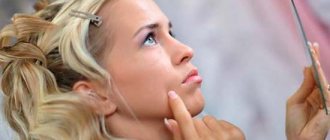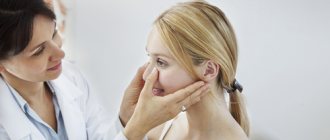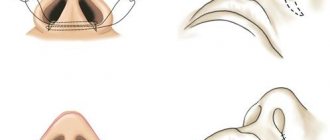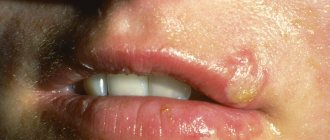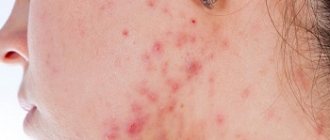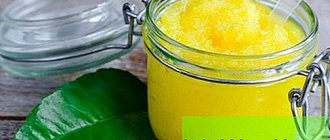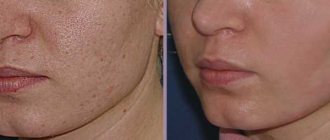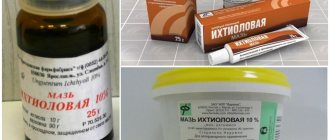Why does the skin peel around the nose?
When old cells die and do not have time to exfoliate naturally, light scales appear on the skin, giving a person a sickly appearance. The main cause of dryness is considered to be a violation of the water-fat balance. The pathological process is facilitated by:
- chapping of the face;
- exposure to ultraviolet radiation;
- unsuitable cosmetic care products;
- avitaminosis;
- temperature difference;
- chronic fatigue and stress.
Around the nose there are large sebaceous glands that influence the formation of blackheads and pimples. The inflammatory process causes the skin to become red and flaky.
Respiratory diseases cause a negative reaction. Instillation of medicinal drops into the nose and discharge of mucus provoke redness and itching. The person constantly wipes his nose with a handkerchief, increasing irritation. As healing progresses, the affected areas become covered with scales, which gradually disappear.
If irritation and peeling on the nose continues for a long time, do not ignore the problem, but get examined to exclude the development of dangerous diseases. Symptoms may be heralds:
- allergic reaction. The disease manifests itself chronically with a runny nose and lacrimation. There are inflamed areas around the nose that are very itchy;
- seborrheic dermatitis. The pathology is provoked by a fungus that causes excessive oiliness, pimples and red flaky spots on the nose;
- demodicosis. A microscopic mite attacks the sebaceous glands. Swelling and inflamed purple areas form on the face;
- diabetes mellitus The disease disrupts the functioning of internal organs and systems. The imbalance is manifested by itchy skin and flaking on the nose, hands and other parts of the body;
- psoriasis. An autoimmune disease affects healthy epidermal cells. A scaly layer appears on the skin. Psoriatic plaques are located not only around the nose, but also in the scalp, behind the ears, and under the armpits.
Important! The primary task to guarantee successful treatment is to find out why the skin on your face is peeling. Having gotten ahead of the provoking factor, eliminate its harmful influence. If this is not done, you will not be able to completely get rid of the redness.
Non-pathological causes and methods of combating hyperemia
Redness and flaking around the nose is often the result of exposure to numerous external factors. In most of these cases, specific treatment is not required - it will be enough to use the tips that we will give below. So, what other reasons could there be for the outside of the nose to itch?
Temperature
Sudden changes in temperature, allergies to cold or heat - these are the main reasons why redness may appear in the area of the nasal epidermis. Peeling and redness under the nose appears after chapping of the face, prolonged exposure to sunlight or frost. Hyperemia will be especially pronounced if there is a sharp temperature change.
If the reasons for the redness of the nose lie in this, then what to do and how to get rid of the unpleasant problem? There is only one way out: in cold weather, lubricate the epidermis with fatty creams, in hot weather - with sunscreen. And to quickly eliminate already manifested hyperemia, you can make a compress from a decoction of chamomile or calendula.
Mechanical damage to the skin
Often the tip of the nose becomes red in people with ARVI, flu or colds, allergies or vasomotor rhinitis. And the reason for this is constant rubbing of the skin of the olfactory organ with a napkin or handkerchief. The situation may be aggravated by the addition of an infection - bacterial, viral or fungal. Most often, herpes develops against this background, so redness must be dealt with immediately.
It is very useful to lubricate such areas of the skin of the nose with sea buckthorn oil. You can apply lotions from a decoction or infusion of sage and mint. Yarrow herb, from which an infusion is made, has wound-healing properties.
Using low-quality cosmetics
If the wings of your nose itch after using powder, foundation or blush, this may indicate hypersensitivity to the cosmetic product. In order not to take anti-allergy pills every day, and not to treat your face with desensitizing creams, you must stop using the element of decorative cosmetics that caused skin hyperemia.
It is important! Almost every cosmetic product has two expiration dates. The first is the one until which the product can be stored in sealed packaging and go on sale. The second is the one for which you need to use up the product after opening. This could be a month, two or a year. You need to know this information, since spoiled cosmetics, like low-quality ones, can cause serious allergies.
Errors in nutrition
Excessive enthusiasm for junk food is fraught with many dangers and unpleasant “surprises”. So, a person who does not want to give up salty foods may well experience a reddened nose, just like a sweet tooth. People suffering from obesity are also susceptible to this problem, especially during the hot season.
In this case, only switching to proper nutrition will help eliminate the defect. At the same time, you should play sports to quickly bring your weight back to normal. But finding out the exact cause of obesity is also important. Perhaps the problem lies not only in poor nutrition.
What to do to prevent skin from peeling
Peeling can be eliminated with comprehensive preventive measures. Be sure to review your diet and include dishes rich in B vitamins, tocopherol and retinol. Eat more:
- fresh carrots;
- green vegetables;
- sea fish;
- dairy products;
- nuts;
- whole grain porridge.
Advice. Avoid eating citrus fruits, chocolate, smoked meats and pickles. They are a common cause of allergic reactions that appear on the nose.
Drink at least 2 liters of clean water daily to prevent lack of moisture in your cells. During the off-season, take vitamin complexes to increase the body's defenses.
A red, scaly nose does not tolerate hot or ice water. To wash your face, use mineral water at room temperature. Avoid alkaline soap. Cleanse with cosmetic milk or oatmeal.
- Grind the flakes with a coffee grinder and place in a plastic container.
- Before washing, pour a little powder into your palm and dilute with warm water until it becomes sour cream. Apply to face, massage the sides of the nose and rinse.
- Do not rub your skin with a towel. Gently blot the moisture with a napkin, wipe the dermis with tonic and apply moisturizer.
Do not use alcohol-based products for daily care. They dry out and increase flaking. When going outside in the summer, protect your face from ultraviolet radiation with special means. In winter, use a thick foundation that protects from frost and wind.
If the area around your nose is covered with white scales, under which red spots have formed, do not rush to clean them with your fingers. First, soak the peeling with water and lubricate with Vaseline. Take a piece of gauze, folded several times, and rub the affected areas, removing the scales. After completing the manipulation, rinse the epidermis with chamomile infusion, dry and lubricate with cream.
Recommendations from cosmetologists
Experts advise getting tested and, if peeling is a consequence of pathological processes in the body, undergoing appropriate therapy. To exclude a fungal infection, a scraping is taken from the reddened area. The doctor examines the scales and determines the presence of pathogenic flora.
Cosmetologists recommend a combination treatment, including:
- proper nutrition;
- salon treatments;
- medicinal ointments and creams;
- traditional methods.
Flaky skin near the nose ceases to bother you after a course of moisturizing professional masks. The doctor selects ingredients that match the type of epidermis. Good results are provided by collagen, hyaluronic acid, emollient oils, herbs, and seaweed.
Mesotherapy eliminates red spots and peeling on the nose. The procedure involves the injection of various drugs under the skin. To treat acne and relieve inflammation, absorbent and antibacterial agents are used, and moisturizing components are used to soften.
This is interesting! Biorevitalization helps against severe dehydration. During the session, hyaluronic acid is injected into the deep layers of the skin. The procedure triggers cell regeneration, restores metabolic processes, and eliminates dryness and sagging.
When the wings of the nose peel off, cosmetologists offer salon peeling, hardware massage, and paraffin therapy. One of these procedures is shown in the video:
Demodectic mange as a cause of peeling skin under the nose
When the skin on the nose is very peeling, doctors often diagnose the disease demodicosis, which is caused by a skin mite. It normally lives under the skin of the vast majority of people, but is often inactive.
Demodicosis can manifest itself against the background of a hormonal surge, which occurs in a number of cases:
- time of puberty;
- severe stress;
- serious illness.
Peeling of the skin during pregnancy is also a common occurrence. During these periods, the body loses its normal protective abilities and becomes more vulnerable to negative influences. In all of these situations, specialist consultation and an integrated approach to solving the problem are necessary.
Even when the skin on the nose is very peeling, it is not so easy to diagnose demodicosis, since the mite sometimes hides in the deep layers of the epidermis and cannot be detected by tests. Sometimes treatment is very delayed. Often a complete cure takes a whole year or even more.
The best remedies for flaking around the nose
It is easier to achieve the best results by combining the use of pharmaceutical drugs and traditional methods. If the skin on your nose is peeling, carry out the procedures regularly and coordinate the actions with a cosmetologist. This will help prevent adverse reactions and worsening of the condition.
Pharmacy drugs
Pharmacies sell ointments and creams that eliminate the inflammatory process and remove peeling.
- Bepanten provides quick results. The ointment contains dexpanthenol, which, penetrating deep into the skin, is converted into vitamin B5. The substance activates metabolic processes, heals damage and rashes. Bepanten is applied to the cleansed dermis 1-2 times a day and rubbed in thoroughly.
- Pantoderm ointment is useful, which forms a protective film that protects from the harmful influences of the environment and accelerates healing. The ointment quickly soothes itching and removes peeling of the skin.
- It is useful to lubricate rough areas around the nose with baby cream with the addition of vitamins A and E, cosmetic Vaseline, including mink oil, and warm sea buckthorn oil.
If the skin around your nose is peeling due to allergies or a fungal infection, powerful medications are needed. Hydrocortisone ointment is highly effective. The product is distributed in a thin layer onto the areas of redness 1-2 times a day. The course of therapy is no longer than 2 weeks. You can buy Griseofulvin ointment, Mycocid lotion, Dermazol.
For seborrheic dermatitis the following are in demand:
- Nystatin ointment;
- Ketoconazole;
- zinc paste;
- Sulfuric ointment.
Redness caused by a runny nose is eliminated with oxolinic ointment or Viferon.
A persistent infection that causes redness between the sinuses is treated with antibiotics. Effective ointments: Gentamicin, Tetracycline, Erythromycin.
Attention! Use hormonal external agents and antibiotics only as prescribed by a doctor. They are fast-acting, but have many contraindications, so self-medication is unacceptable.
Traditional methods
Using unconventional methods, you can solve the problem caused by excessive dryness, chapping, and inappropriate cosmetic care. In other cases, traditional medicine recipes are used as auxiliaries that complement the main treatment.
Masks
Mix a spoonful of natural honey with mineral water in equal proportions. Apply to inflamed areas with a cotton pad, massage with your fingers, leave for 5 minutes and wash.
- A simple mask quickly copes with flaky skin on the nose. Pour a spoonful of oatmeal with a small amount of boiling milk. After 10 minutes, strain off excess liquid. Add a teaspoon of olive oil and May honey to the warm porridge. Apply the mixture to your nose. After 20 minutes, wash off the composition.
- Mash a large spoonful of homemade cottage cheese with a fork, after adding a spoonful of olive oil. Wash the parsley sprigs and chop. Take a spoon and mix with cottage cheese. Distribute over problem areas and do not rinse for 20 minutes.
- Pour a tablespoon of linden blossom into a glass of boiling water. After half an hour, filter. Place a spoonful of oatmeal and olive oil in a ceramic bowl and pour in the linden infusion a little at a time, stirring constantly. The composition should acquire the consistency of liquid sour cream. Lubricate the epidermis around the nose and face along the massage lines. After 15 minutes, clean the skin with a cotton pad soaked in linden infusion.
And this simple and affordable remedy will allow you to get rid of peeling after 2-3 applications:
Apply anti-flaking masks daily for a week. If the problem does not disappear during this time, consult a cosmetologist.
How to Avoid Worsening Skin Redness
When treating the underlying cause of your redness, there are irritants that you should avoid to avoid making the situation worse. For example, you may want to avoid wearing makeup for a few days to give your skin time to recover—you may also want to avoid direct sunlight and extreme temperatures.
Here are some other irritants you should avoid to help reduce redness around the nose:
- Alcohol, caffeine and spicy foods, which make blood vessels more visible
- Some skin care ingredients, such as alcohol
- Artificial fragrances and other additives that may irritate the skin
- Rough fabrics or fabrics that can damage or irritate the skin
If you want to reduce redness, it's important to give your skin time to recover and keep it hydrated. If you need a little extra help there are a number of skin care products you can try.
